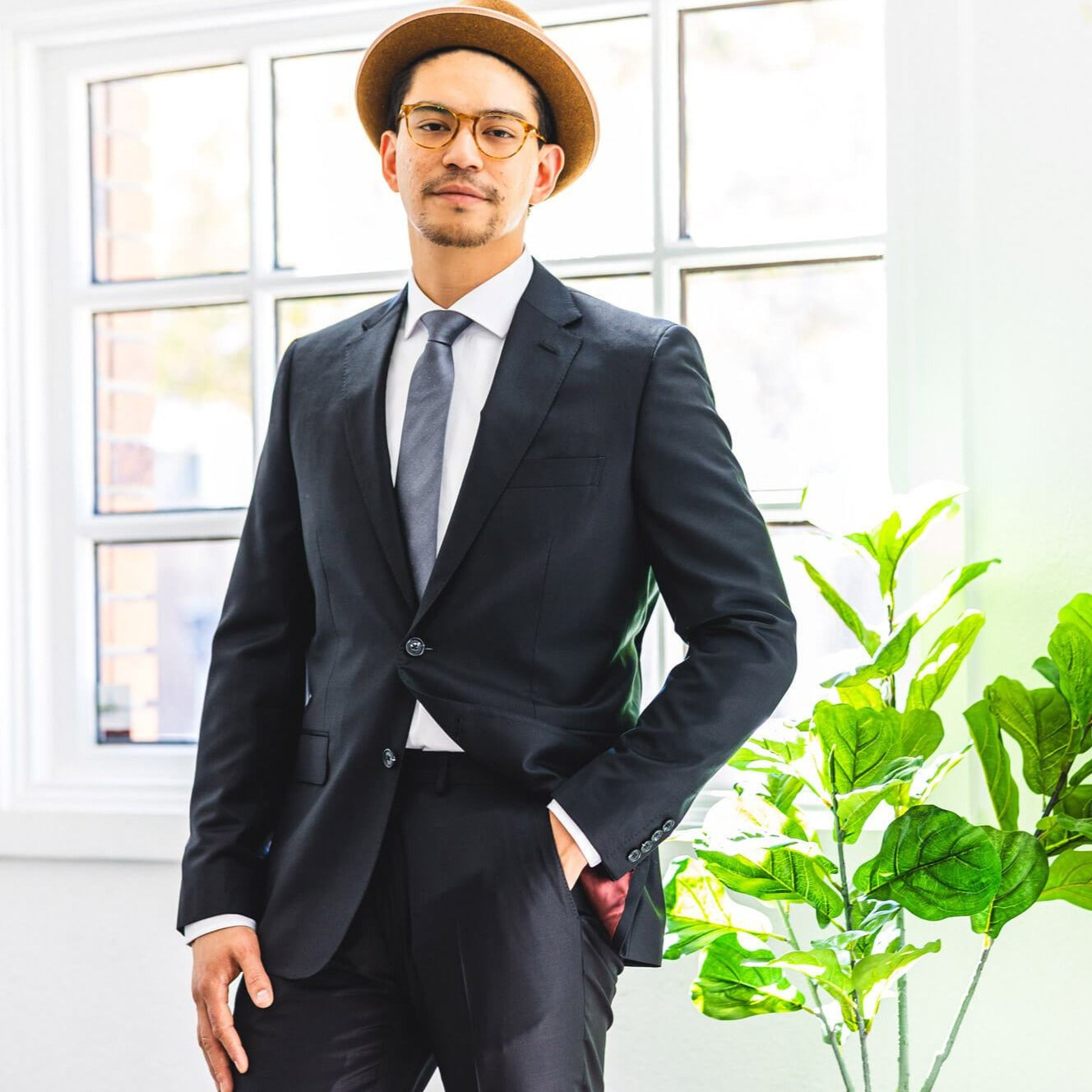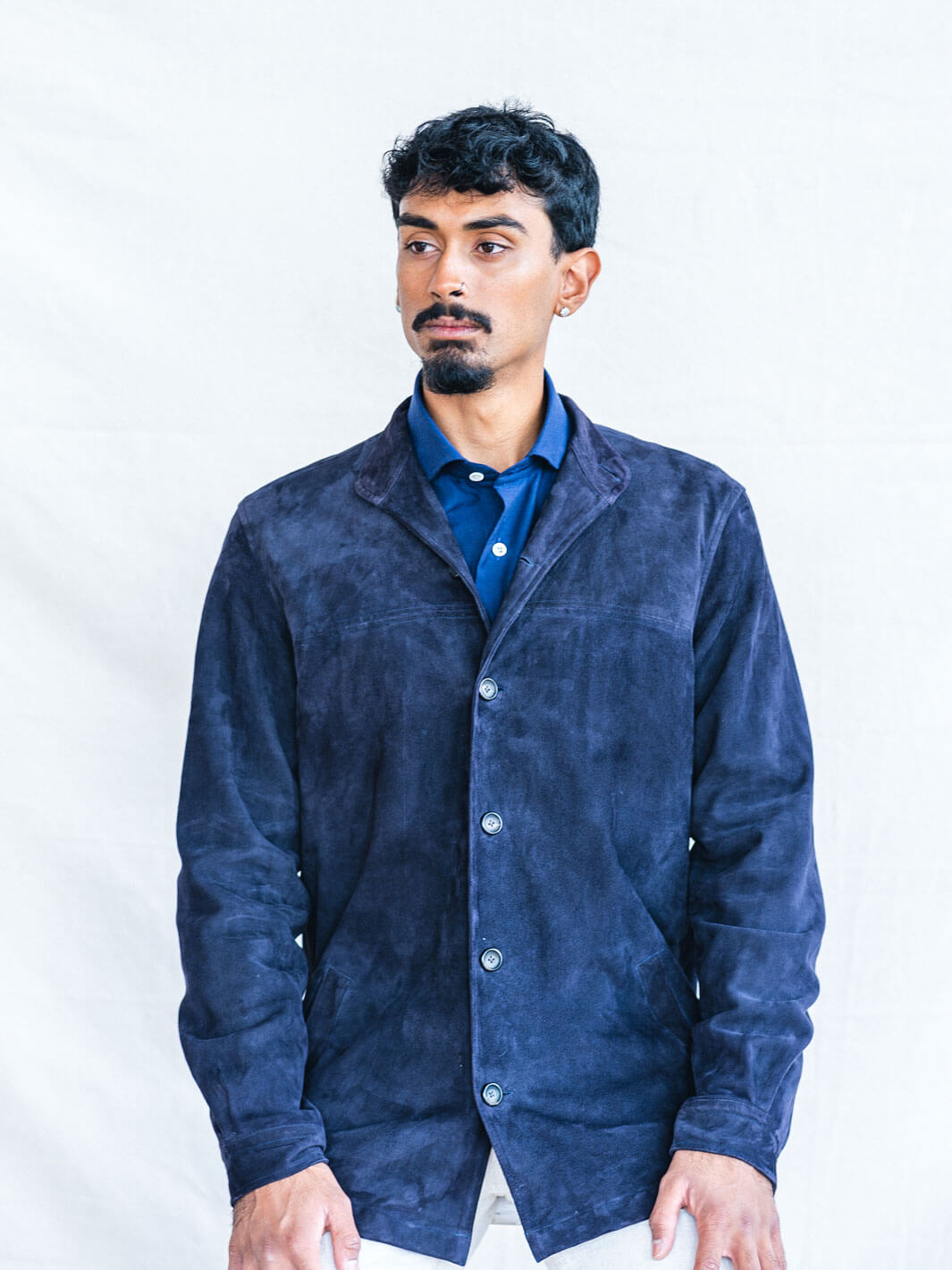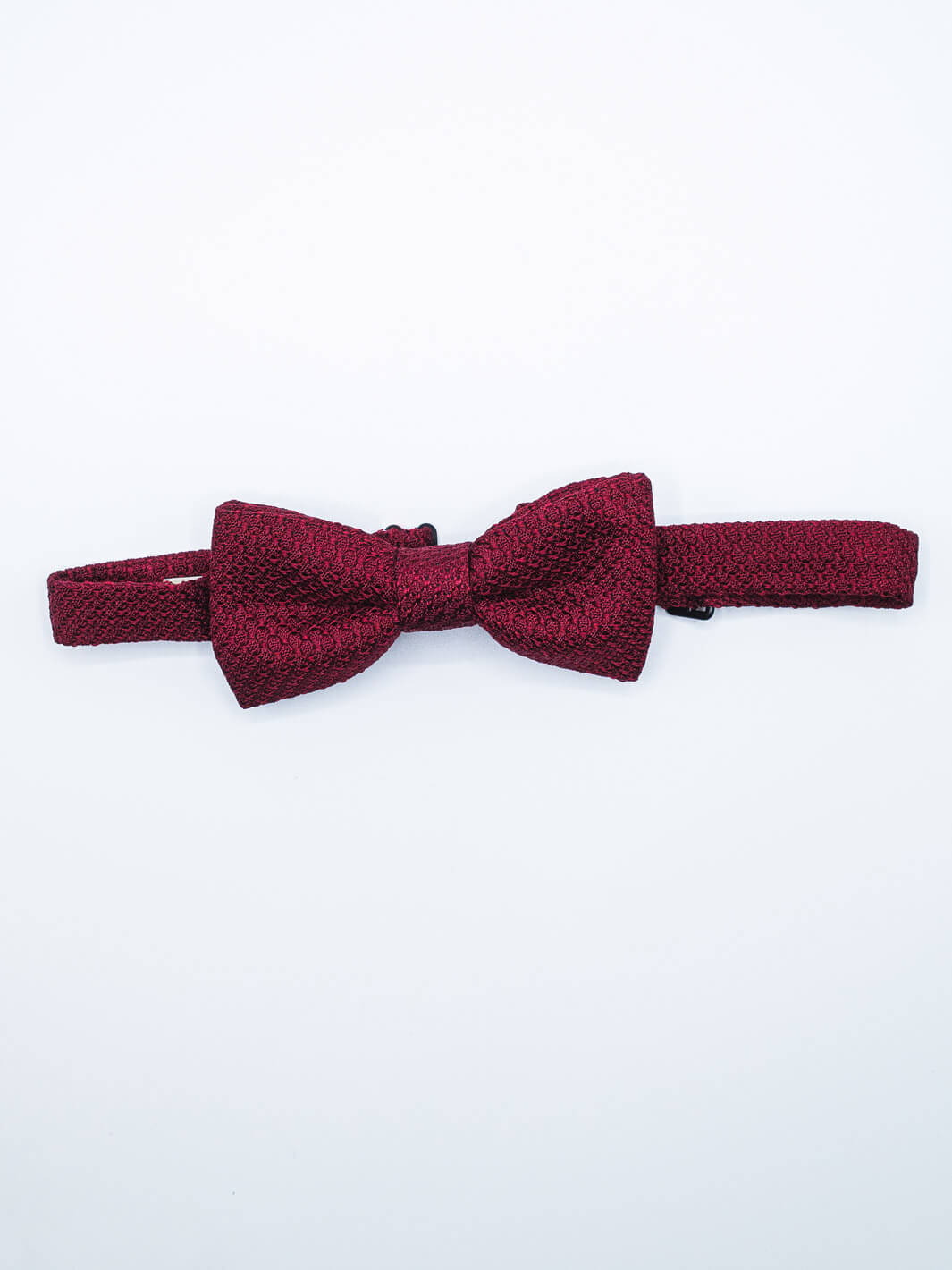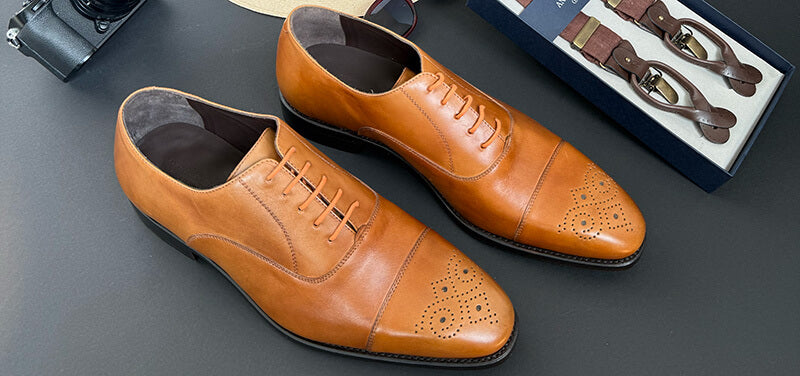Before the 1300s, clothing was more of a practicality than a fashion item, so clothes weren’t constructed anywhere close to the way we see them shaped today. Instead, garments were used as a covering, sewed from only a few pieces of cloth. Examples of this are linens commissioned by a king to use under his soldiers’ armor, and robes constructed for daily wear. As the Renaissance period arrived, tailoring became a more complex art form focused on emphasizing the beauty of the human body.
The late 18th century saw the invention of the sewing machine and new tailoring techniques. “Ready-to-wear” clothing began to make its appearance in the 19th century when the military needed mass-produced uniforms. Factory-made garments also became popular among civilians because they were low-cost, off-the-rack options that fit most body types well enough.
However, if one still wanted a custom-made outfit, finding a tailor who made bespoke wear was the way to go, and still is. I sat down with Anatoly Kisilyov, master tailor and owner of Anatoly & Sons, to give you an idea of the process, what makes his suits better than others, his fabric quality, and how he got his start in the custom clothing industry.

R: What motivated you to learn the trade and eventually start your own business in Oakland, CA?
A: I grew up in the former Soviet Union in Kiev, the capital city of Ukraine. Those were very difficult times. If you wanted to get the material goods you needed for simple basic living, you’d often come up short. Our generation had it rough. Back then, procuring the clothing you wanted was nearly impossible. The reason behind the shortages was because the Communist government at the time was closed off to trade from the rest of the world. The centralized economic system couldn’t hold a candle to a free market economy.
Anyway, since I loved clothing, I knew the best thing for me to do was to enroll in a tailoring school, so I could learn to make clothing from fabrics myself. I made a lot of garments before I moved to the United States to pursue the American Dream. In the U.S., I learned how the free market operated, and I began to build a life for myself and my family. I worked for several tailoring shops learning the tricks of the trade before finally deciding to start my own business.
R: Why would someone purchase a bespoke suit as opposed to one that’s off-the-rack?
A: For many reasons! A lot of clients come to us for bespoke suits because they have trouble fitting into off-the-rack suits. The fact is, suits that are “ready to wear” aren’t adequate for certain physiques, and they don’t provide the best look either. It might be too big in the shoulders, the arms are too tight, or a number of other things. Manufacturers design them to fit just well enough for most people, so oftentimes, people have to come to me for a custom suit. This is very common.
Another difference between bespoke suits and off-the-rack is exclusivity and design. Most clients love being able to pick out all their fabrics, trimmings, button linings, and threads. The fact that they have full control over the end result makes this truly something special.
Finally, longevity. Suits cut from the ground up take a lot of time and care. Due to the level of attention and quality, bespoke suits are going to last you for decades. So, something that may have cost you more up-front actually ends up saving you money down the road. Think twice before you decide to buy a suit at your local department store just because the price tag is low. It is low for a reason. Furthermore, a bespoke suit also has the added versatility of dealing with changes in weight. They are built with extra fabric at the seams, so that you have more room for alterations down the road.

R: Why do you recommend working with a tailor in person rather than simply sending measurements to an online custom clothier?
A: It does not compare. I wouldn’t even recommend going to a tailor unless they truly know what they’re doing. There is a myth that all tailors know what they’re talking about. It’s certainly not true. There are good tailors, but there are also bad tailors out there. There aren’t many true tailors left, and measuring is not enough to make a good suit. Tailoring is as much a science as it is an art. Most of the online retailers and custom shops are set up by people who love clothes and have a passion for which I admire, but none of them have any experience and have never cut a pattern themselves, nor understand the process. They’re just in love with the luxury and not the actual art!
That being said, if you’re going to have a suit made to your exact measurements, please go to a tailor that has a good track record in the industry. If you come by my shop, you will often see me working on fabrics myself. I’ve personally worked in this trade for 30 years. Visiting a good tailor in person will always get you better results than buying a made-to-measure (MTM) suit online, since these online stores sacrifice quality for convenience. When their suit arrives at their doorstep, people often complain that it doesn’t fit them well.
Here’s why: When a client visits my store, I have them try on a fitting garment. From there, I can make up to 30 or more adjustments to make sure the suit fits perfectly. This is why an appointment with a client remains necessary for a proper fit, something the online business model isn’t designed to do. Another downside of ordering online is that the manufacturer cuts corners to reduce their production costs, so that they can sell you suits at low prices, but that also reduces the quality of the cut. For these reasons, I encourage everyone to visit a qualified tailor who will work with you throughout the whole process.
R: Can you briefly go over the process from meeting with the customer to presenting him or her with the finished product?
A: When we meet a potential client, we like to ask a few things first, like the type of event they plan on wearing the outfit for and the date of the event. This is important for us to know so that we can plan to meet your time frame. We love when clients show us examples of what they want, so that we can start doing our analysis and relay those ideas on paper with either questions or concerns. My team also does a great job helping people who don’t quite know what they want yet.
When you arrive, we let you design your garment by choosing your cloth and trimmings, and letting you style it by choosing lapels, shoulders, pockets, and more. We also take you through the fitting process. You can choose between a made-to-measure or a bespoke suit, depending on how custom you want to go. Bespoke suits are 100% custom-made and cut entirely from scratch, while made-to-measure suits are adjusted and customized using a pre-cut pattern as a starting point. A bespoke suit usually takes 2.5–3 months to make, while a made-to-measure suit takes 1.5–2 months. Both are excellent quality, but it all depends on how custom you want to go, your budget, and your time frame.
When your bespoke garment is ready, we call you in for a basted fitting. A basted fitting is when your suit is temporarily stitched together after we cut and assemble it. This fitting allows us to see what adjustments need to be made for the perfect fit and style. If you decided to order a made-to-measure garment instead, we leave the sleeves and pants unfinished, so that we can still offer you the final bespoke touch on your next fitting.
R: Tell me about the quality of your clothing. I hear you put a lot of time and effort into procuring material from top vendors.
A: Yes. I have to give credit to my eldest son, “K.” He procures most of the products that we stock. Most clients tell us that our products are one of a kind and always of great quality, especially for the price. No complaints in that category. And we actually stand behind our products with full confidence, curating both contemporary and timeless pieces.
You can imagine the difference between making 1 million shirts and a few hundred. We typically look for smaller brands that offer quality-made garments, rather than big brand-name labels. This ensures that we’re getting a consistent fit and a certain level of elegance.
Most of the products currently offered on our site are our general stock program that we can always order in for clients pressed for time, but we offer a lot of unique small batch items too — limited quantity products just for the brick and mortar store. Currently we’ve started our own brand, which will consist of traditional suits, jackets, trousers, a variety of different shirts, shoes, and many more casual pieces going forward.
If we’re talking fabrics, we also take pride in obtaining an excellent assortment of them. We have really good relationships with our fabric suppliers who carry some of the best fabrics in the industry: Loro Piana, Drago, Holland & Sherry, Scabal, and many others.

R: Can you tell me a bit more about your current brand Anatoly & Sons? What is it that sets you apart from your competition?
A: Anatoly & Sons is a brand that my sons and I have been developing alongside our passionate Master Tailors for quite some time. The idea was to offer ready-made garments that have a custom/bespoke feel for a reasonable cost, and so you don’t have to wait months to get a garment you like.
Currently, we have suits, trousers, & jackets, but we’ll be releasing additional shirt styles, jeans, chinos, polos, and more. Focusing on certain parts of the garment that we believe are the key ingredients to making a great garment is key, and it is something that I think most people overlook. We will be offering a full range of sizes as we develop more patterns for our clothes. It’s an exciting new venture for us!
One thing really sets us apart from our competition, and that is the fabric. Our Ready-to-wear clothing is made from the same material that we use for our custom clothing options. We also work closely with a small group of tailors that we know and love. Most people are using one facility to manufacture their orders in bulk, which ultimately reduces the quality of the product. Anatoly & Sons has worked hard to find reputable sites that specialize in each step of the process. The idea of working closely with a few tailors allows for greater control and a quality that exceeds most garments you see on the market.
R: Where is the custom clothing industry headed?
A: At the moment, there’s no substitute for visiting a tailor to get properly measured and fitted. Online clothiers just don’t have the technology to do that yet. Perhaps in the future, AI will be able to do a full-body scan, draft the pattern, and send it to be laser-cut and sewn together, but we are far from it. For now, you’re stuck with me, and that’s a good thing because I’ll take care of you.
R: Thank you for taking the time to talk to me, Anatoly.
A: Always a pleasure, Robert!









